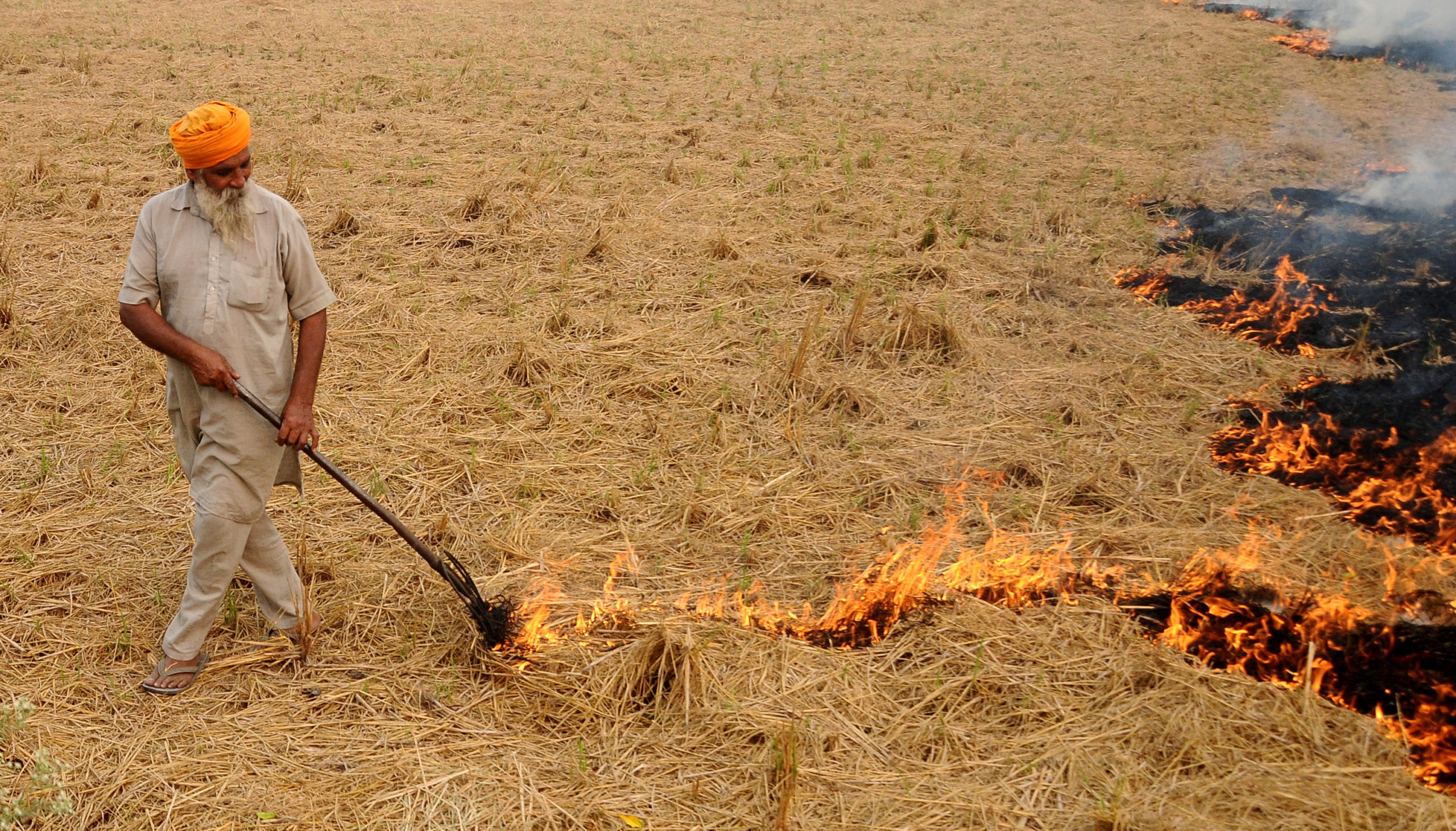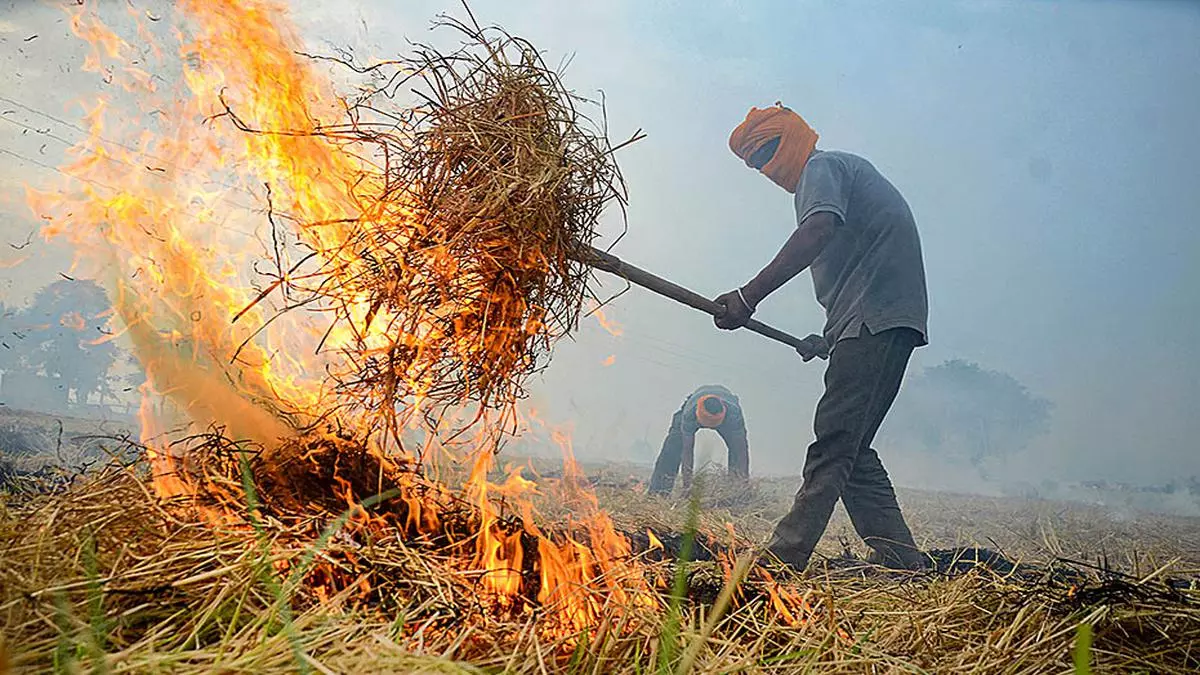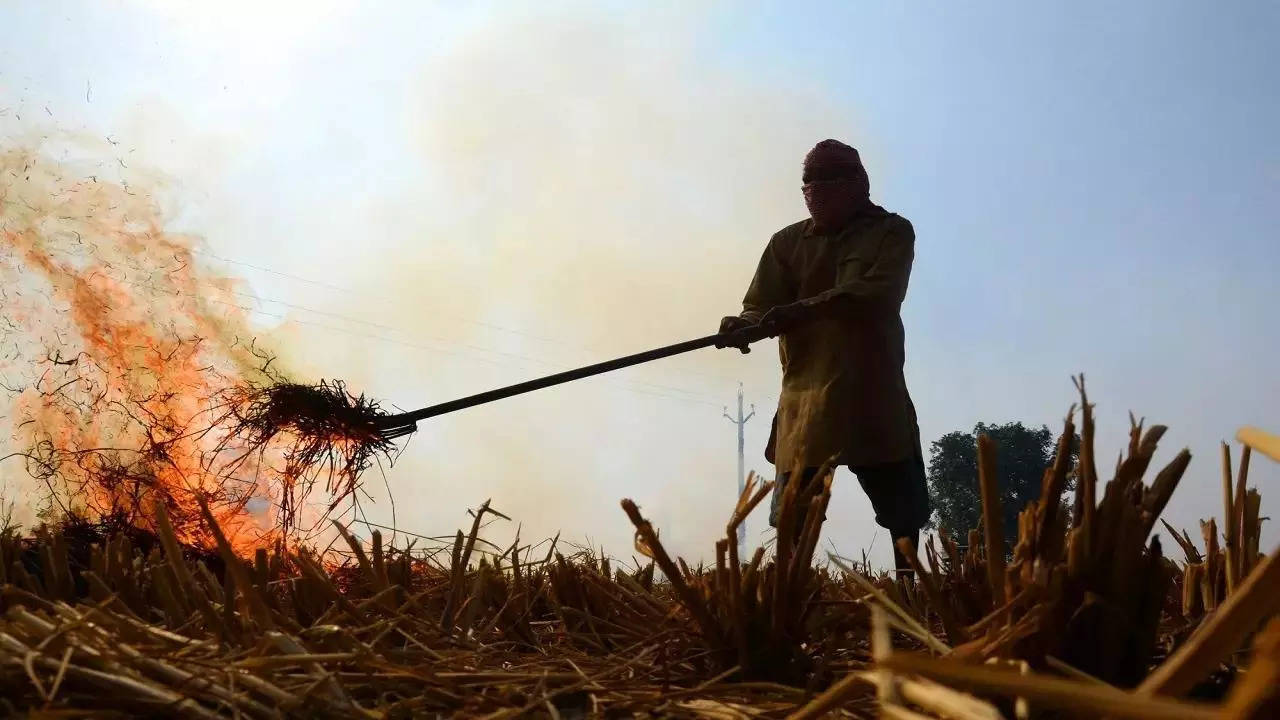Decline of Paddy Straw Burning in the Current Year 2023

Decline of Paddy Straw Burning in the Current Year 2023
In recent years, the burning of paddy straw has emerged as a significant environmental concern in many countries. However, this year has seen a notable decline in this practice.
Paddy straw, or rice straw, is the residue left behind after the harvest of rice. For years, many farmers found it convenient to burn these residues as a quick means to clear their fields for the next cropping season.

This, however, has led to several environmental and health problems, including the release of greenhouse gases, air pollution, and associated health risks.
Stubble burning incidents following paddy harvesting have increased 67% to 1154 as of Thursday in Punjab, Haryana, Uttar Pradesh, Madhya Pradesh, Rajasthan, and Delhi since September 15.
The rice harvesting is currently taking place in northern states, according to authorities, but it was delayed last year due to rainfall in the first week of August.
Punjab has recorded 754 paddy straw burning occurrences, which is 38% more than last year, while Haryana has reported 190 instances thus far, according to the Consortium for Research on Agroecosystem Monitoring and Modelling from Space (CREAMS) at the Indian Agricultural Research Institute in Delhi.

The official said that agricultural residue burning incidents will undoubtedly decrease towards the conclusion of the growing season as a result of government incentives for managing paddy straw.
According to the official, the overall number of stubble burning occurrences so far this year is 56% lower than the 2020 level of 2150 events.
According to an official, stubble burning incidences typically increase in the northern regions between October 26 and November 6, when farmers clear paddy fields to prepare them for wheat growing during the rabi season.
In comparison to 2021, there were 69,615 fewer stubble burning incidents in Punjab, Haryana, Uttar Pradesh, Delhi, Rajasthan, and Madhya Pradesh from September 15 to November 30, a decrease of 25%. In comparison to last year, Punjab reported a 30% decrease in stubble burning occurrences, totaling 49,922; still, the state accounted for 72% of all reports of rice straw burnings throughout northern India.

Through the paddy straw supply chain management programme under the public-private partnership models, the government hopes to significantly reduce the number of incidents of stubble burning events this season. The agriculture ministry has allocated Rs 600 crore to Punjab, Haryana, Uttar Pradesh, and Madhya Pradesh.
According to a representative of the agriculture ministry, Rs 200 crore has already been allocated for the Punjab and Haryana seasons to be used for “ex-situ” management, which involves removing agricultural waste from the field for use as compost, firewood, animal feed and other industrial purposes, as well as “in-situ” management, which involves leaving crop residue on the field for decomposition.
According to Punjab’s action plan, this year’s production of straw from the state’s 3.1 million hectares of paddy land would probably total about 20 million tonnes (MT). Out of these, 16 MT of straw are produced from non-basmati rice crops, which are unsuitable as animal feed due to their greater silica content.
The state intends to manage around 4.67 MT of paddy straw ex situ and approximately 11.5 MT of paddy straw in situ.

The Haryana government has started taking action by providing financial support of Rs 7000/acre for agricultural diversification from rice to other crops, Rs 1000/acre for crop residue management, and the use of paddy stubble for industrial purposes including broilers, paperboard, and power plants.
Governments, NGOs, and environmentalists have run extensive awareness campaigns highlighting the detrimental effects of straw burning. This has played a crucial role in making farmers more environmentally conscious.
Initiatives promoting the use of paddy straw in various forms – such as fodder for cattle, composting, or as raw material in the paper industry – have gained traction. Machines like the ‘Happy Seeder’ allow farmers to sow wheat directly into the rice stubble without the need to burn the straw. Such technological interventions have provided practical alternatives to burning.

Stricter enforcement of bans on stubble burning and punitive measures against defaulters have acted as deterrents. Some governments have provided subsidies for machinery that facilitates the removal or incorporation of paddy straw into the soil.
Reduced straw burning leads to a significant decrease in air pollutants. Regions that previously witnessed smog and low visibility post-harvest are now experiencing clearer skies. Instead of destroying the residue, incorporating it back into the soil can improve its organic content, structure, and overall health.
Reduced air pollution means fewer health problems such as respiratory issues, heart diseases, and allergies, among the general population.
Burning paddy straw releases carbon dioxide, methane, and nitrous oxide – all potent greenhouse gases. A reduction in burning thus contributes to reduced greenhouse gas emissions.
From biogas production to mushroom cultivation, there are multiple avenues where paddy straw can be utilized, leading to additional revenue streams for farmers.

The decline has shown that when the government, NGOs, and the community come together, impactful change is achievable. This could serve as a blueprint for addressing other environmental issues.
The positive response to tools like the ‘Happy Seeder’ suggests a market for sustainable agricultural machinery. This could spur further research and innovations in the sector.
The decline in paddy straw burning this year is a commendable shift towards sustainable farming and a cleaner environment. While it is essential to acknowledge the progress made, continuous efforts are required to ensure that this isn’t a one-off event but the beginning of a longstanding tradition of environmentally-friendly farming.




